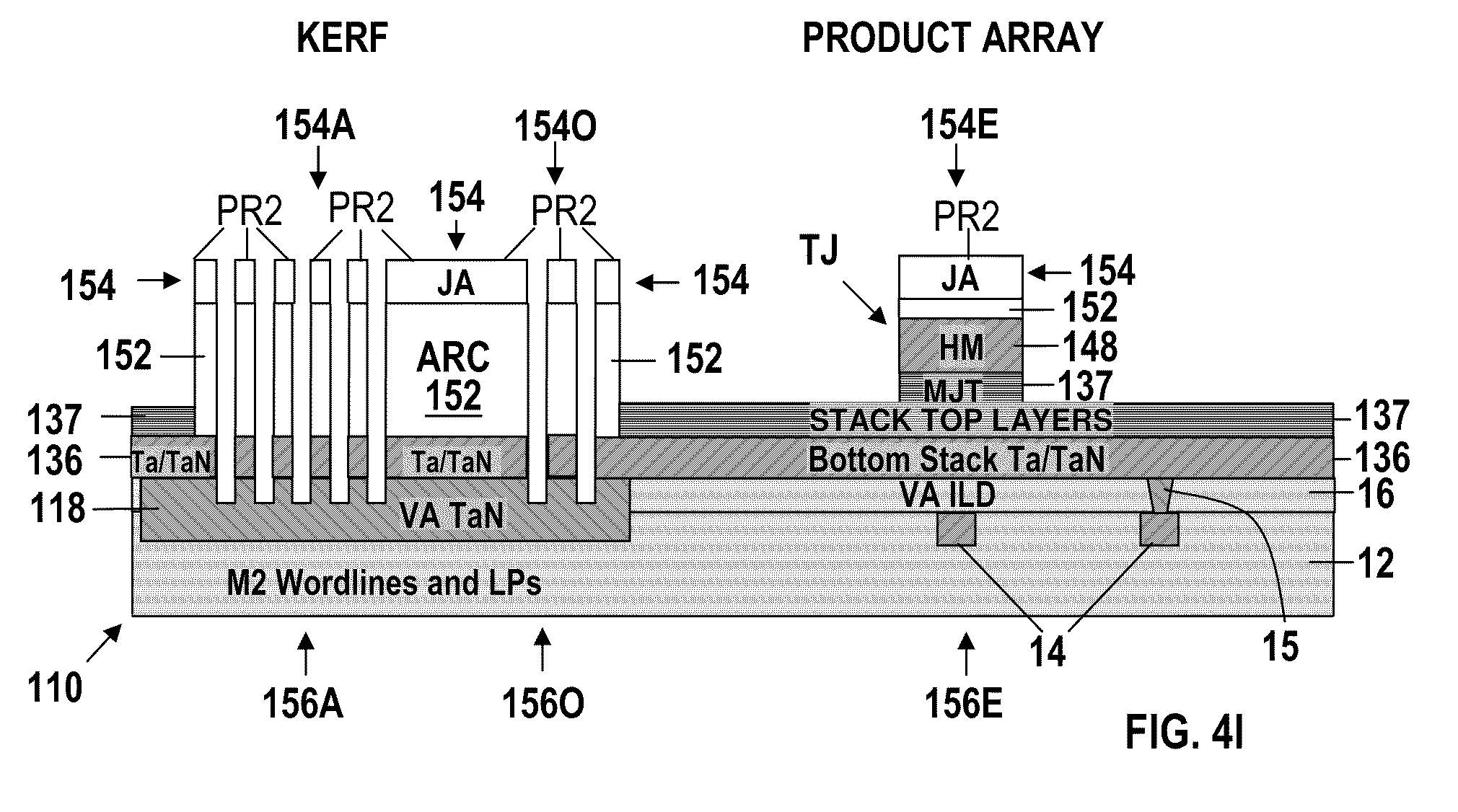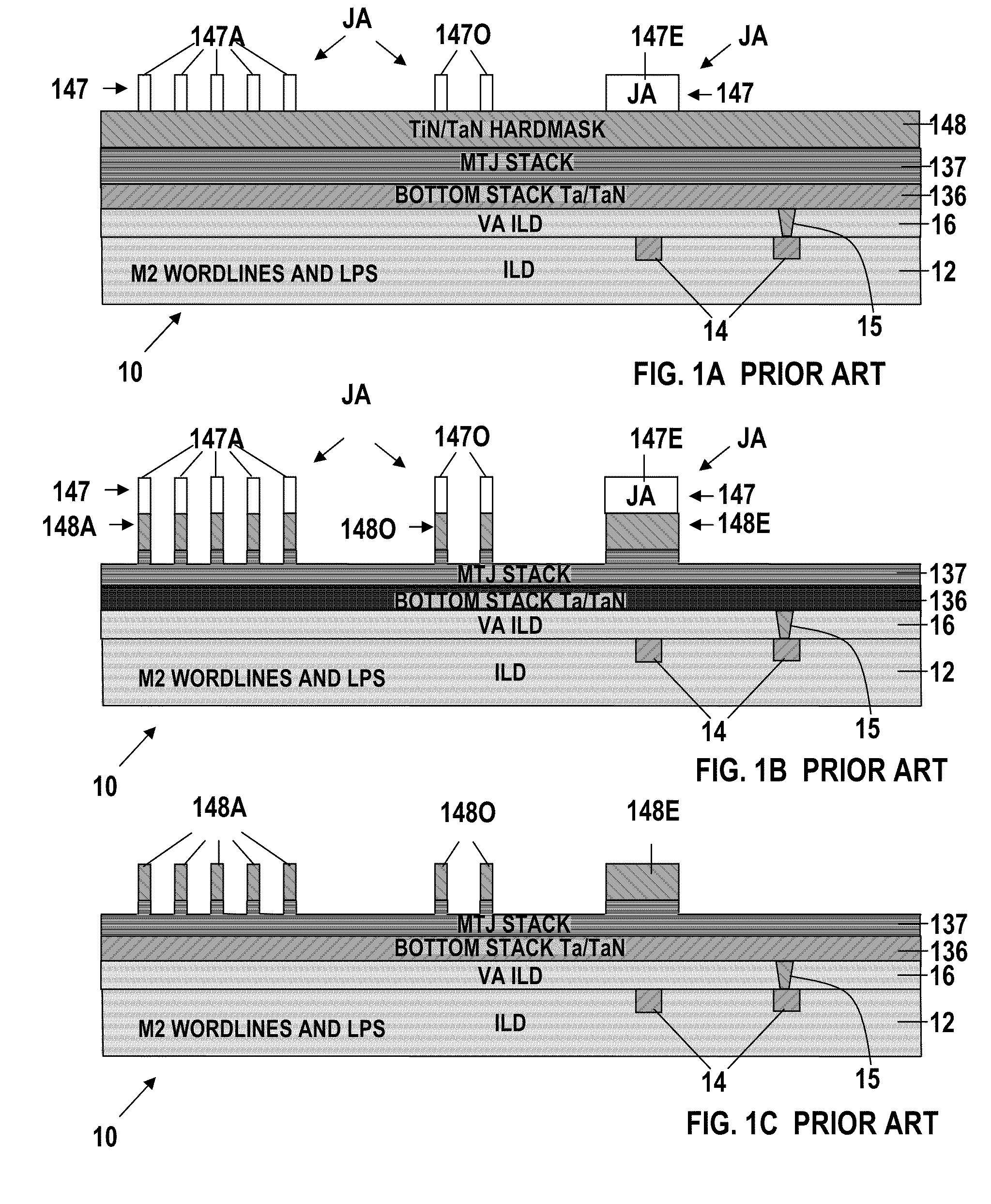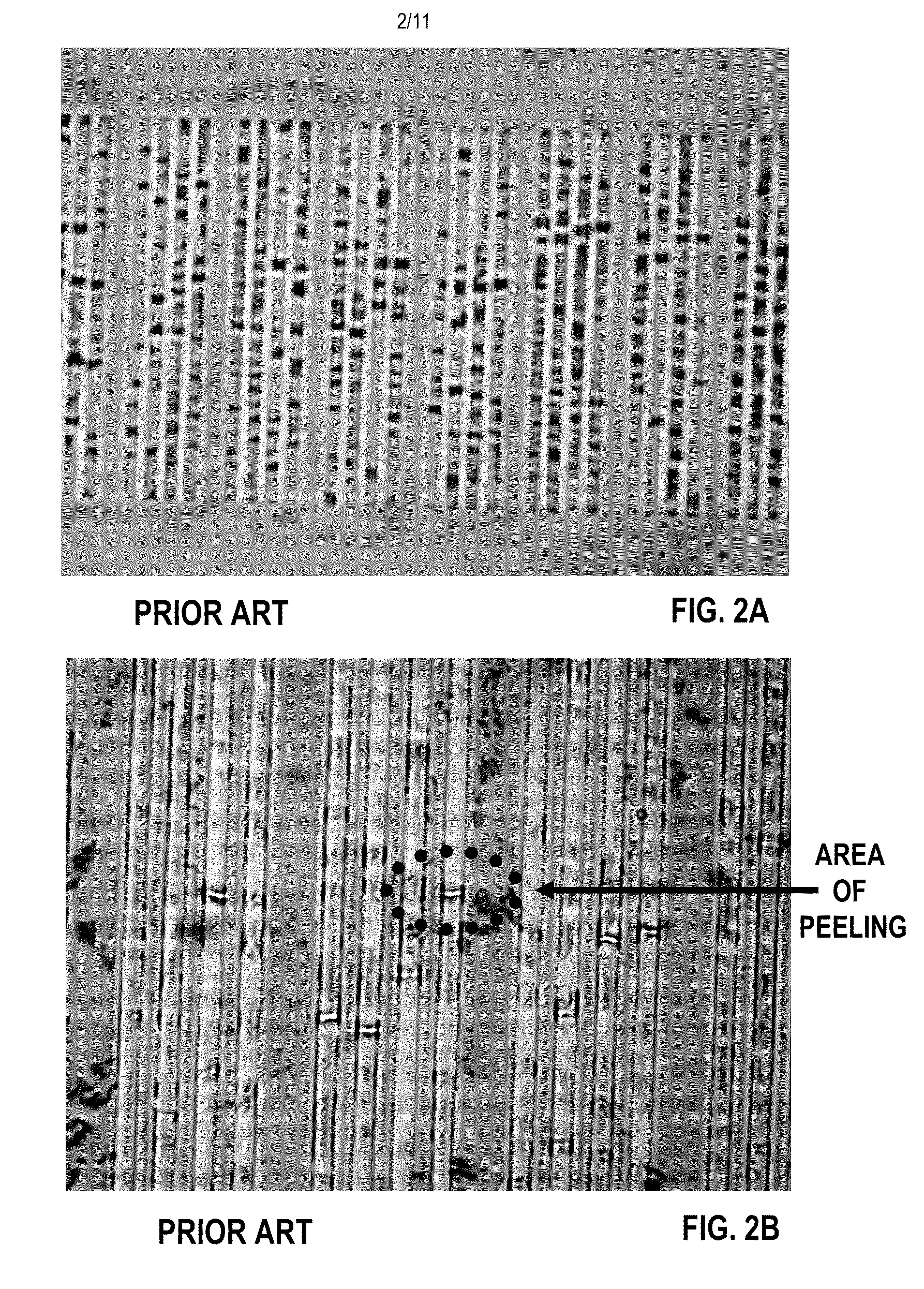Method for integration of magnetic random access memories with improved lithographic alignment to magnetic tunnel junctions
a random access memory and magnetic tunnel junction technology, applied in multicolor photographic processing, instruments, photomechanical equipment, etc., can solve the problems of poor alignment, inability to see the alignment marks of the metal level therein, and peeling of a plurality, so as to improve the alignment to the ja lithographic patterning level
- Summary
- Abstract
- Description
- Claims
- Application Information
AI Technical Summary
Benefits of technology
Problems solved by technology
Method used
Image
Examples
Embodiment Construction
[0047]FIGS. 4A-4L are sectional elevational views of an MRAM device 110 in the process of being manufactured in accordance with the method of this invention. In accordance with this invention, techniques are provided for aligning subsequent upper lithographic levels to MTJ structures. More specifically, the present invention provides techniques for creating enhanced alignment marks at the level of the MTJ structures that can be invoked while aligning subsequent upper levels.
Step A
[0048]FIG. 4A shows a sectional elevational view of an MRAM device 110 in an early stage of manufacture. The device 110 comprises a lower Inter Level Dielectric (ILD) substrate layer 12 in the upper surface of which, electric conductors 14 have been formed for providing electrical interconnections between features within the device 110. A via level (VA) ILD layer 16 composed of a refractory material, e.g. a bilayer of tantalum over tantalum nitride, has been formed on the top surface of the lower ILD substr...
PUM
 Login to View More
Login to View More Abstract
Description
Claims
Application Information
 Login to View More
Login to View More - R&D
- Intellectual Property
- Life Sciences
- Materials
- Tech Scout
- Unparalleled Data Quality
- Higher Quality Content
- 60% Fewer Hallucinations
Browse by: Latest US Patents, China's latest patents, Technical Efficacy Thesaurus, Application Domain, Technology Topic, Popular Technical Reports.
© 2025 PatSnap. All rights reserved.Legal|Privacy policy|Modern Slavery Act Transparency Statement|Sitemap|About US| Contact US: help@patsnap.com



